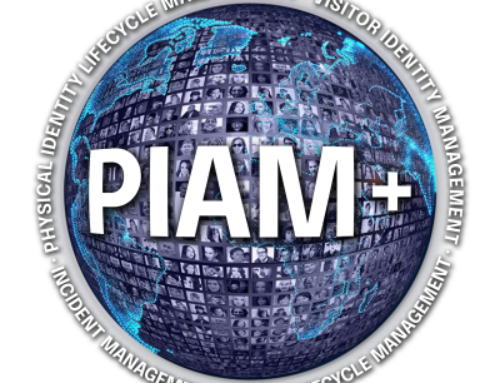Healthcare environments have become unexpectedly dangerous places to work. According to the Bureau of Labor Statistics, hospital workers are five times more likely to experience workplace violence than workers in other sectors. And that’s just the tip of the iceberg – patient healthcare is also suffering.
Talk to any charge nurse, and they’ll tell you how staff members hesitate before entering certain rooms, how they’ve started walking in pairs down previously routine hallways, how turnover has accelerated not just because of burnout, but because people genuinely don’t feel safe at work. This isn’t just about isolated incidents. When your workforce is constantly looking over their shoulders, patient care suffers too.
Why Conventional Access Control is Simply Not good Enough
Traditional access control treats every individual at every door the same way—swipe your badge, door opens, done. But hospitals aren’t office buildings. A delivery person needs different access than a nurse, who needs different access than a family member visiting the NICU.
MERON AI’s next generation Physical Identity and Access Management (PIAM) solution – herein recategorized as PIAM+ — recognizes this complexity. Instead of forcing hospitals to work around rigid security systems, it adapts to how healthcare organizations actually operate.
Take visitor management, for example. Most hospitals still rely on paper sign-in sheets and manual processes that create bottlenecks at the worst possible times—when families are stressed and need to reach their loved ones quickly.
MERON AI PIAM+ streamlines this with self-service kiosks and mobile pre-registration, but more importantly, it connects with the hospital’s EMR system to automatically enforce the right policies. If a patient is in isolation, the system knows. If visiting hours are restricted for a particular unit, it adjusts accordingly.
This isn’t about making things more complicated—it’s about making them work better for everyone involved.
The Workforce Challenge No One Talks About
Managing identity and access in healthcare is like trying to choreograph a dance where half the performers change every few months. Between traveling nurses, rotating residents, contract staff, and third-party vendors, hospitals constantly manage a workforce that’s in flux.
The old approach—manually updating badge permissions, relying on department heads to remember to deactivate former employees, hoping everyone follows the right protocols—creates gaps that put everyone at risk.
MERON AI PIAM+ automates much of this complexity by integrating with HR and credentialing systems. When a traveling nurse completes their assignment, their access automatically expires. When a vendor’s training certification lapses, the system flags it before they can access restricted areas. It’s not about replacing human judgment—it’s about giving people the tools they need to make better decisions.
Making Data Work for People
One hospital security director recently told me, “We generate tons of data, but it doesn’t tell us anything useful until something goes wrong.” That’s the problem with most access control systems—they’re great at creating logs, but terrible at creating insights.
MERON AI PIAM+ approaches this differently.
Instead of just tracking who went where, it identifies patterns that matter. Why are there unusual access attempts in the pharmacy at 3 AM? Why is there a spike in visitor traffic to certain units? Is there a correlation between certain types of access violations and broader security incidents?
This predictive approach helps hospitals move from reactive security—responding to problems after they occur—to proactive safety management. It’s the difference between installing better locks after a break-in and preventing the break-in in the first place.
The Integration Challenge
Healthcare IT is notoriously complex, and the last thing any hospital needs is another system that doesn’t play well with others. MERON AI PIAM+ was designed specifically to integrate with the tools hospitals already use—EMRs, HRIS systems, existing badging infrastructure, surveillance cameras.
This matters more than it might seem. When security systems exist in isolation, they create blind spots and inefficiencies. When they work together, they create a comprehensive picture that helps everyone make better decisions.
What Success Actually Looks Like
The Healthcare Financial Management Association found that hospitals with modern identity management systems reduce compliance-related penalties by 30%. The International Association for Healthcare Security and Safety reports that integrated security systems can cut incident resolution times by 40%. These are meaningful improvements, but they don’t capture the full picture.
Real success looks like the nurse who told me she feels safer walking the halls at night because she knows unauthorized people can’t easily access her unit. It looks like the family who can focus on supporting their loved one instead of navigating confusing visitor protocols. It looks like the security team that can spend time on proactive safety measures instead of constantly chasing down badge issues and access violations.
Healthcare Isn’t Generic—Why Should Security Be?
Most access control vendors try to sell the same solution to hospitals, office buildings, and manufacturing plants. But healthcare is different. Hospitals operate 24/7, serve vulnerable populations, balance public access with security needs, and navigate complex regulatory requirements that don’t exist in other sectors.
MERON PIAM+ specifically works well for healthcare because generic solutions don’t work for non-generic challenges. Every feature reflects real hospital needs—from emergency lockdown capabilities to infection-control-driven access policies to integration with clinical workflows.
The Bottom Line: Trust
Hospital security isn’t really about technology—it’s about trust. Patients trust that hospitals will keep them safe. Families trust that they’ll be able to reach their loved ones when needed. Staff trust that their workplace won’t put them in harm’s way.
Technology can support that trust, but only if it’s designed with real people and real situations in mind. MERON AI PIAM+ does this by treating security not as an obstacle to overcome, but as a foundation that enables better care.
When healthcare workers feel safe, they can focus on what they do best. When families can navigate hospital systems easily, they can support their loved ones more effectively. When administrators have the insights they need to make informed decisions, everyone benefits.
That’s what modern healthcare security should accomplish—not just protecting buildings, but protecting the people and relationships that make healing possible.
For more information, please contact us.




